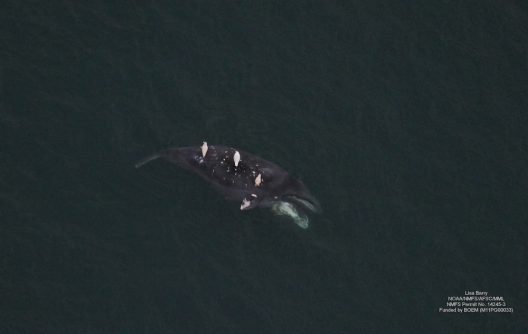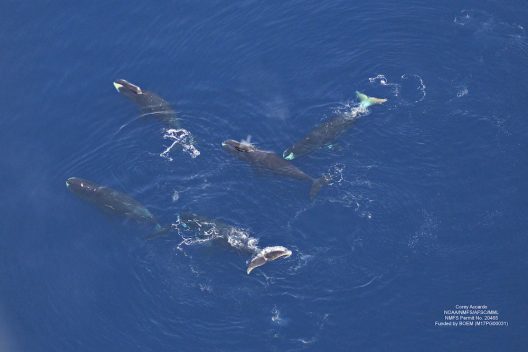
A new study, published in Polar Biology and led by researchers at the University of Washington’s Cooperative Institute for Climate, Ocean, and Ecosystem Studies (CICOES), is particularly interested in the ‘death’ part of those survey observations, and has uncovered the first direct evidence of killer whales as the primary cause of death for one of the Arctic’s endangered species, bowhead whales of the Bering-Chukchi-Beaufort seas stock.
By analyzing aerial images of bowhead whale carcasses from 2009 to 2018 and cross-referencing sightings with the timing of reported whale strikes by Alaska Native hunters, researchers attributed cause of death to either probable killer whale predation or aboriginal subsistence hunting. In some instances, cause of death could not be determined when injuries were absent or not significant enough to suggest killer whale predation, the carcass was too decomposed or image quality was too poor.
Killer whales are bowhead whales’ only natural predator, and while encounters between the two species have never been witnessed in the eastern Chukchi and western Beaufort seas, killer whale predation on bowhead whales have been seen throughout many other regions where their ranges overlap. Lead author Amy Willoughby, a research scientist with CICOES and NOAA’s Alaska Fisheries Science Center (NOAA AFSC), emphasizes the potential metabolic effects for bowhead whales when killer whales are present. “When killer whales are nearby, bowhead whales may try to move farther away which uses energy, and killer whale presence can disrupt feeding opportunities.”

Bowhead whales are valuable sociocultural resources for the Alaska Native communities who rely on them for subsistence. Inuit and Yupik studies provide much of the existing evidence for successful killer whale predation on bowheads outside of the eastern Chukchi and western Beaufort seas. “The Arctic is a very unique place to conduct research because you have the opportunity to collaborate with Alaska Native community members who have a direct connection to the marine environment, hold hundreds of years of traditional ecological knowledge and are often the first to observe changes,” said Willoughby.
A number of questions remain surrounding the effects of killer whale predation on bowhead whale populations and behavior. To avoid encountering killer whales, Bering-Chukchi-Beaufort bowhead whales could migrate further north beyond the range of killer whales or move into shallower water along the coastline, a strategy the species has adopted in other areas. Other whale species, such as gray whales in the eastern Pacific, also migrate near the coastline to avoid killer whales.

Willoughby and her collaborators are continuing their work examining whale mortality for different species in the Arctic. “I’m hoping to publish our findings for gray whale carcasses in the eastern Chukchi Sea, bowhead whale carcass data from 2019 which was a bit different compared to 2009-2018, and I’d really like to analyze our bowhead whale imagery to summarize entanglement scarring encounter rates for free swimming bowhead whales sighted during our aerial surveys,” she says.
These exciting new results are somewhat bittersweet. After 41 years, ASAMM no longer has funding and its annual surveys have concluded. “At a time when the Arctic is changing at an unprecedented rate, there is currently no plan for continued annual large scale aerial monitoring of marine mammals in the Arctic, and I can’t help but worry about what we’re missing,” Willoughby surmises. “I’d like to thank my co-authors, the Bureau of Ocean Energy Management who funded this important project for so many years, the NOAA AFSC Marine Mammal Laboratory who co-managed the project, and all of the flight crews, biologists and collaborators.”
For further reading on this topic and whales in the Arctic, check out:

